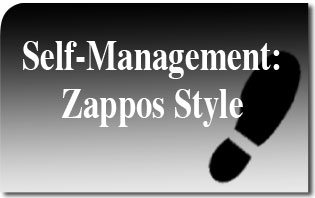 There have been many attempts to apply socialism to the modern workplace. One of these was the program of former president of France François Mitterrand who sought to implement what he called self-managing socialism in 1981. Like all such schemes, it was a dismal failure. He could not make the moldy principles of Marxism palatable even in the home of liberty, equality and fraternity. Mitterrand’s egalitarian program proposed a modified socialism that involved applying the principles of “self-management” to micro-manage every detail of French religious, social, political, economic and personal life.
There have been many attempts to apply socialism to the modern workplace. One of these was the program of former president of France François Mitterrand who sought to implement what he called self-managing socialism in 1981. Like all such schemes, it was a dismal failure. He could not make the moldy principles of Marxism palatable even in the home of liberty, equality and fraternity. Mitterrand’s egalitarian program proposed a modified socialism that involved applying the principles of “self-management” to micro-manage every detail of French religious, social, political, economic and personal life.
In a world inebriated with the delusional promises of equality, online shoe and clothing shop Zappos is implementing a similar plan under the radical label of a management-free employee-run company. Zappos is currently owned by Amazon, has 1,500 employees and enjoys $1.2 billion in sales, all created with a traditional, pyramidal corporate management system.
Zappos’ CEO Tony Hsieh has been working for two years to change all of that. He is imposing a philosophy of self-management known as holacracy, a term coined by Arthur Koestler. Koestler joined the German communist party in 1931, authored several books, committed suicide together with his wife and is known for saying that “nothing is more sad than the death of an illusion.” This quote takes on special significance when pondering the impossibility of the socialist dream in general and self-management in particular.
Koestler defines holacracy as a social technology of organizational governance where authority and decision-making are distributed throughout self-organized teams, as opposed to a traditional management hierarchy.
Let us try to understand what this means. If teams can “spontaneously” organize, someone with the capacity to organize must exist. If so, there is some quality of management skills present within these “self” managing teams. Hsieh wants to rid Zappos of its traditional pyramid management and replace it with a network of vaguely defined circles empowered with some sort of authority and decision-making. Therefore, they are no more self-managing than any other company because there must be a managing force present or nothing would be accomplished other than chaos. One question remains, who is empowered to empower the teams?
Hsieh claims to want to create a company which functions more like a city and less like a top-down bureaucratic organization. He contends that as businesses grow, their efficiency declines, and they go out of business while cities do not. Unfortunately, he fails to state the many reasons why companies lose efficiency and go out of business, and it has little to do with equality versus hierarchy. He also demonstrates a poor grasp of history regarding cities that have gone “out of business” such as Bannack, Montana; Calico, California; Centralia, Pennsylvania; Oatman, Arizona; Detroit, Michigan; San Bernadino, California and South Pass City, Wyoming to name a few.
By implementing self-management, Hsieh hopes to tackle the major problems he sees that plague large companies’ efficiency and growth, namely the ability to move quickly, bring problems to the surface, liberate risk taking, and tap into workers’ novel ideas all while eliminating employee dissatisfaction. Any well-managed traditional company seeks to do exactly the same without introducing the chaos that ensues by forcing pseudo equality upon its employees. The very problems Hsieh hopes to eliminate are caused precisely by poor management, not by the fact that there is management.
His goals cannot be achieved by destroying traditional management structure and implementing equality but rather by creating an infrastructure with leadership and mentoring qualities able to motivate subordinates by a virtuous example thus bringing out the very best employees have to give. Somehow Hsieh wants to invent a wheel that rolls, but is not round.
Currently Zappos compensates employees in relation to traditional roles, but with the holarchic system in place, employees will receive “badges” for the work or skills being done in a particular role. It seems that Zappos cannot divorce itself fully from recognizing and compensating for capability, talent and effort, those values that constitute our inherent inequalities; inequalities blatantly ignored by socialists.
There are additional badges not tied to classical roles of performance that result in a raise. One example is the Teal 101 badge that employees can earn after reading management guru Frederic Laloux’s book, Reinventing Organizations, A guide to Creating Organizations, Inspired by the Next Stage of Human Consciousness, and writing up to three paragraphs demonstrating a comprehension of the thesis.
Fear not, if you are unable or unwilling to earn a badge, you can also get one for simply speaking well of self-managing companies or by teaching yoga.
All of this begins to sound more like an indoctrination rather than working for a company to make a livelihood. For those who do not agree with this newly imposed doctrine, Zappos offers a severance package that nearly fourteen percent of their employees have already taken.
To add to the loss of these employees, Zappos has been struggling to attract top-level engineers since 2004, and at the same time they are experiencing what they call a “tech exodus” to Silicon Valley companies; companies that have traditional pyramidal corporate structures and compensation.
The idea of self-management is nothing new. It is the fruit of the errors of socialism applied to business. This mix of Marxist errors and holarchy is nothing more than a repetition of failed French self-managing socialism: Zappos style.

